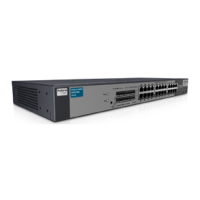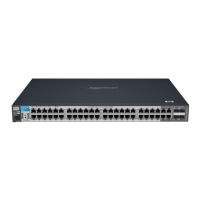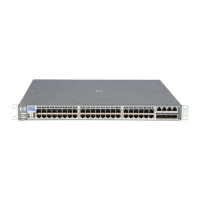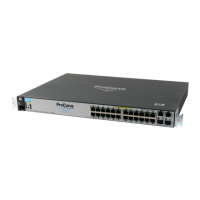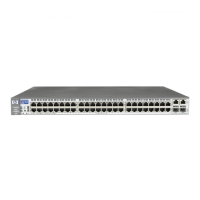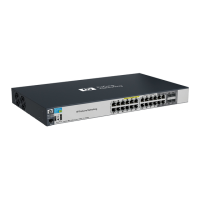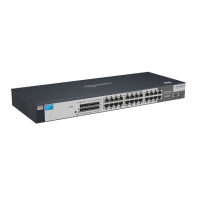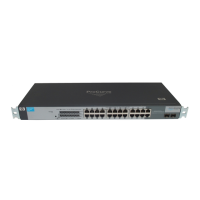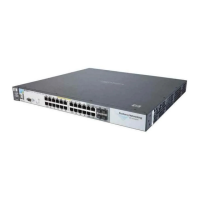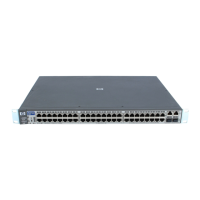6-52
Quality of Service (QoS): Managing Bandwidth More Effectively
Using QoS Types To Configure QoS for Outbound Traffic
QoS Interface (Source-Port) Priority
QoS Type Precedence: 6
The QoS Interface option enables you to use a packet’s source-port on the
switch as a QoS type. Where a particular source-port type has the highest
precedence in the switch for traffic entering through that port, then traffic
received from the port is marked with the source-port type’s configured
priority level.
Options for Assigning Priority. Priority control options for packets from
a specified source-port include:
■ 802.1p priority
■ DSCP policy (Assigning a new DSCP and an associated 802.1p priority;
inbound packets must be IPv4.)
(For operation when other QoS types apply to the same traffic, refer to “QoS
Types for Prioritizing Outbound Packets” on page 6-9.)
Assigning a Priority Based on Source-Port
This option assigns a priority to outbound packets having the specified source-
port. Configure this option by either specifying the source-port ahead of the
qos command or moving to the port context for the port you want to configure
for priority. (For configuring multiple source-ports with the same priority, you
may find it easier to use the interface < port-list > command to go to the port
context instead of individually configuring the priority for each port.)
Syntax: interface < port-list > qos priority < 0 - 7 >
Configures an 802.1p priority for packets entering the switch
through the specified (source) ports. This priority determines
the packet queue in the outbound port(s) to which traffic is
sent. If a packet leaves the switch on a tagged port, it carries
the 802.1p priority with it to the next downstream device. You
can configure one QoS type for each source-port or group of
source-ports. (Default: No-override)
no interface < port-list > qos
Disables use of the specified source-port(s) for QoS type(s)
and resets the priority for the specified source-port(s) to No-
override.
show qos port-priority
Lists the QoS port-priority types with their priority data.
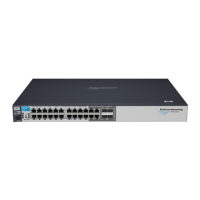
